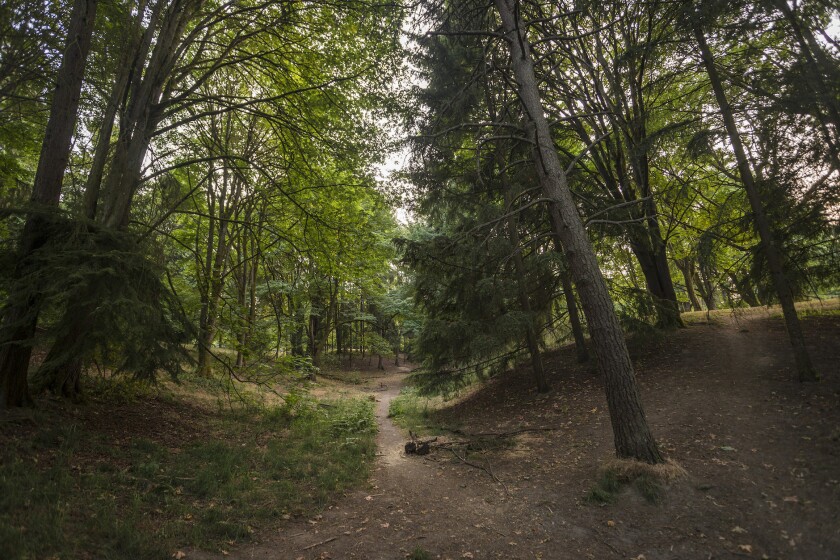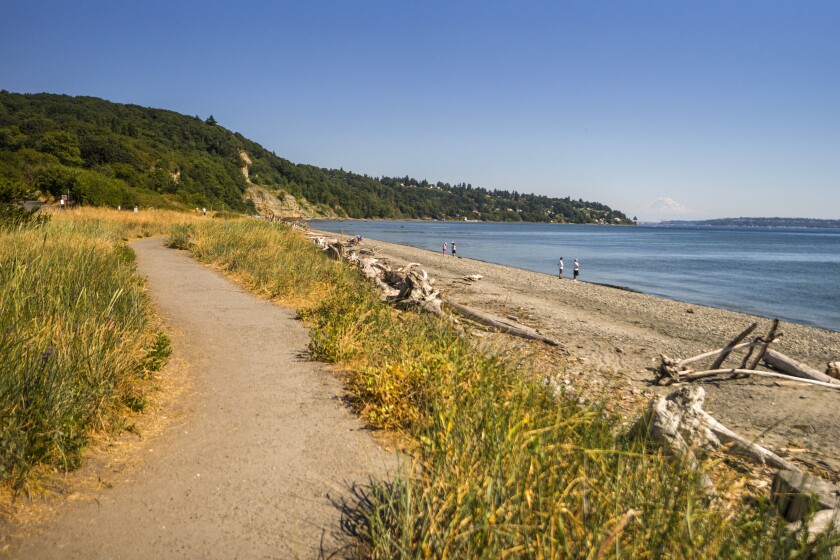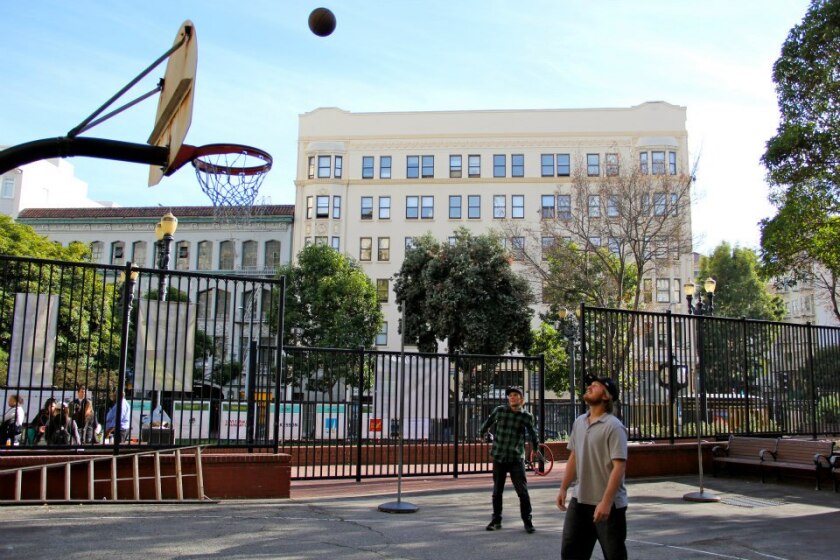In Brief:
Public trust in government may be on shaky ground, but there’s one thing government does that almost every American appreciates. More than 80 percent of the population visited a local park facility last year. According to the National Recreation and Park Association, 9 out of 10 adults in the U.S. agree that parks and recreation is “an important service” provided by their local government.
Since 2012, the Trust for Public Land (TPL) has published annual rankings of the best parks in America’s most populous cities. Over the years, the cohort in its trademarked ParkScore index has grown from 46 to 100.
Parks are scored on five factors with equal point value: access, equity, acreage, investment and amenities, with a maximum score of 100. Investment and acreage are considered in proportion to a city’s size and population.
The 2023 ParkScore rankings were published recently, and for the third year in a row, Washington, D.C., received the highest score. A quarter of the city’s land is devoted to parks. It also scored in the highest ranges in regard to access (percent of residents within a 10-minute walk to a park) and equity (the extent to which both access and per capita park space is similar in white communities, communities of color and low-income communities.)
If we had a medicine that delivered as many benefits as parks, we would all be taking it.
Howard Frumkin, Trust for Public Lands
The 2023 index announcement was accompanied by the release of additional research with particular relevance as the country continues to push through lingering pandemic impacts. A TPL report, The Power of Parks to Promote Health, noted a correlation between high ParkScore rankings and lower levels of poor mental health and physical inactivity.
“If we had a medicine that delivered as many benefits as parks, we would all be taking it,” said Howard Frumkin, TPL’s senior vice president, in introducing these findings.
Working Upstream
The health rewards from time spent outdoors are well established, whether the stress-relieving effects of contact with nature or the cardiovascular benefits of vigorous exercise. What is new and notable, says Linda Hwang, senior director, strategy and innovation at TPL, is the ways that park systems are working with other organizations in the community to create programs and services focused on producing better health outcomes.
These include partnerships with health-care insurance companies and health-care providers. “In some cases, we’re seeing hospitals invest in capital improvement in parks,” she says. Hwang finds it remarkable to see the sector looking upstream to parks and their health-promoting services as a preventive resource worth their investment.
A majority of the 100 cities in the ParkScore rankings have a formal partnership with a health-care institution of some sort, and in a quarter of them, a health organization is providing funding or staff for health programs. In all, TPL found more than 800 examples of programs with targeted health outcomes. “That’s something we didn’t expect to see,” Hwang says.
The better the system, the greater the benefits. On average, TPL reports, people living in cities in its top 25 are 21 percent less likely to be physically inactive and 9 percent less likely to have mental health problems than those in the bottom 25.
Parks provide settings for programs such as “Walk with a Doc,” free physician-led walking groups. They create opportunities for “weak ties,” connections among people who may not know each other well. “You have a dog, you go out on a regular basis, you run into the same set of dog owners, you chat about your dog and your day — these weak ties offer something in terms of a mental health benefit,” says Hwang.
Some urban parks offer environments suitable for “forest bathing,” a practice that has been incorporated in Japan’s national health program for decades. Forest bathing — which can be as uncomplicated as walking slowly among trees and engaging the senses — has been found to reduce stress, lower heart rate and blood pressure and reduce sleep disturbances.

(Seattle Parks and Recreation)
Nature Deficit
Seattle, Wash. was eighth in the ParkScore rankings, just below San Francisco. It’s more apparent than ever that parks are essential city infrastructure, and as important as bridges, highways, hospitals and schools, says AP Diaz, the city’s superintendent of parks and recreation.
Public parks offered escape for urbanites eager to get out of their homes during the worst periods of the pandemic. (Ninety-nine percent of Seattleites are a 10-minute walk away from a park.) That renewed appreciation for them, and the number of people using Seattle’s parks is at an all-time high, Diaz says. His colleagues around the country have seen the same thing.
Seattle’s natural environment is diverse. Seward Park has a 120-acre forest of old-growth trees. The city’s park system also includes nine lifeguarded swimming beaches.
“We’re blessed to have such an abundance of natural parks,” says Diaz. “However, there’s a huge obligation for us to ensure that all kids experience them — even if you live close to amazing nature, not everyone has the ability to get into spaces that aren’t competing with recreation and other things.”
To address this “nature deficit,” the city is working to build up educational programs around its parks, capturing opportunities for lessons about climate change, the region’s fish and wildlife or how trees grow. Diaz is partnering with groups that can provide transportation to day camps or overnight camps.
Another priority for the coming year, he says, is to “lean in” to Seattle’s medical community. Diaz would like to identify and track more data about the health and wellness benefits from his parks, including trends reflected in communities with varying demographics.
He’s excited about the possibility that physicians in the city could write “prescriptions” for residents to spend time in nature, as he’s seen in some cities in Canada. “Whether to combat stress or other types of ailments, they'll prescribe so many hours meditating, walking or spending time alone — you fulfill that prescription not by going down to Walgreens, but by going to a park.”

(Seattle Parks and Recreation)
Keeping Things Rolling
Seattle invests more per capita in parks than most cities in the TPL rankings; its taxpayers have committed to a levy that will provide $750 million over the next six years. Overall, park investment is holding steady, The Trust’s Hwang says, with increases in midsized cities and decreases in cities with populations among a million.

(AP Diaz)
“There’s a lot of money to move this forward right now,” says Hwang. Multiple federal agencies are distributing funds through the Inflation Reduction Act to address climate change and close the park equity gap. The U.S. Department of Transportation and the U.S. Environmental Protection Agency both have “thriving communities” programs, and the Forest Service offers urban and community forest grants.
These funds open the door to more than exercise programs, pickleball courts or community gardens. In May, the surgeon general issued a report on an epidemic of loneliness increasing the risk for premature death in America, with an impact equivalent to smoking 15 cigarettes a day.
“One of the things we saw in terms of tactics was park systems training staff to be better listeners, more empathic, more present,” says Hwang. “That’s a small investment that might have gone unnoticed, [but one] that can scale out and chip away at the loneliness around us.”
Related Articles













